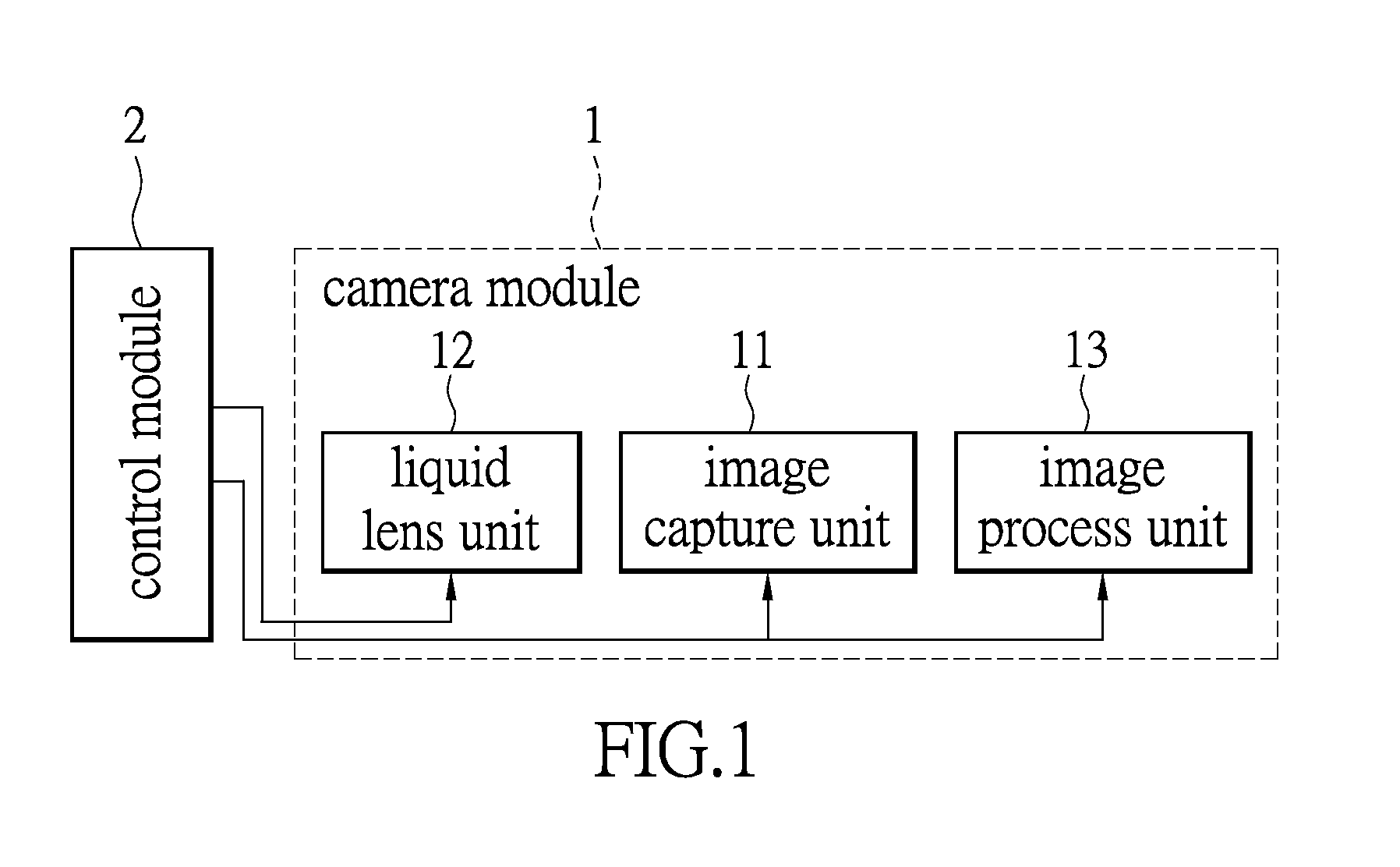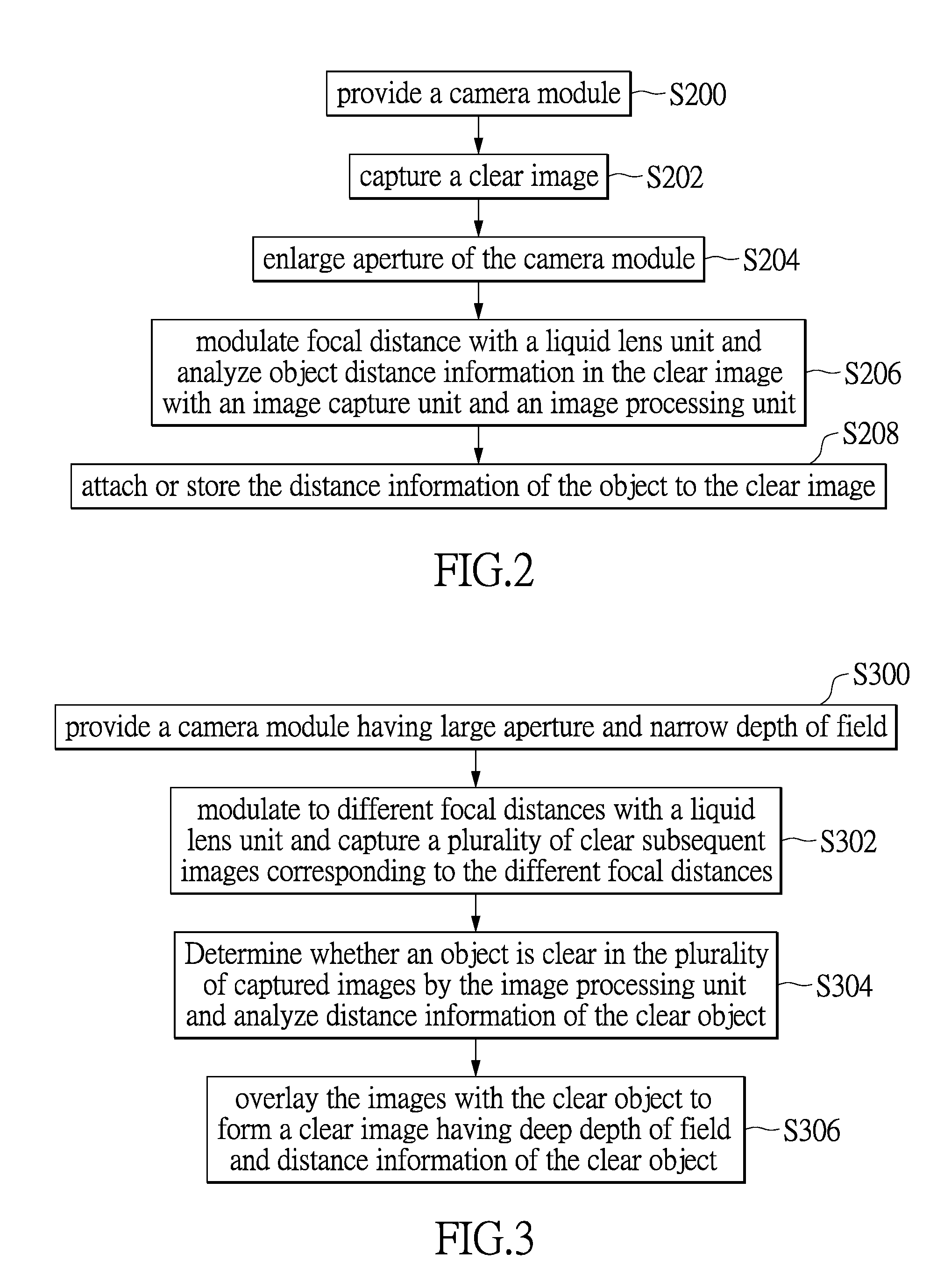Method of capturing images
a technology of depth information and image, applied in the field of capturing images, can solve the problems of reducing the processing load due to the analysis of depth information of the object in the image, affecting the accuracy of the image, so as to achieve the effect of fast and easy acquisition and reduced processing load
- Summary
- Abstract
- Description
- Claims
- Application Information
AI Technical Summary
Benefits of technology
Problems solved by technology
Method used
Image
Examples
first embodiment
[0024]Please refer to FIGS. 1, 2, 5A, and 5B. The instant embodiment provides a method for capturing images, including the following steps. Step S200 provides a camera module 1, which includes an image capture unit 11, a liquid lens unit 12, and an image process unit 13, and a control module 2 can be further included. The control module 2 is electrically connected to and controls the image capture unit 11, the liquid lens unit 12, and the image process unit 13.
[0025]In step S202, capture a clear image I with the camera module 1 at a preset aperture. For example, the preset aperture is the relative aperture when the camera module 1 is auto-focusing. The preset aperture can determine the amount of aperture adjustment is necessary when using the internal system of the camera module 1, so that multiple objects in the clear image captured are clearly presented. In other words, the aperture and shutter are linked values when capturing images. The camera module 1 will automatically detect ...
second embodiment
[0038]Please refer to FIGS. 1, 3, 6A, and 6B. The second embodiment of the instant disclosure provides an image capturing method, in which the most significant difference between the first and second embodiments is that the second embodiment can use a camera module 1 with large aperture that creates a narrow depth of field or a camera module 1 having preset relative aperture while not requiring a clear image I to be taken beforehand. As the image capture unit 11 retrieves clear regions of the image, the image process unit 13 analyzes the object depth information, and finally image and object depth information are overlaid.
[0039]As shown in FIG. 3, the second embodiment of the instant disclosure provides a method for capturing images, which includes the following steps. In step S300, providing a camera module 1 having large aperture to create a narrow depth of field. The camera module 1 includes an image capture unit 11, a liquid lens unit 12, and an image process unit 13. The contro...
PUM
 Login to View More
Login to View More Abstract
Description
Claims
Application Information
 Login to View More
Login to View More - R&D
- Intellectual Property
- Life Sciences
- Materials
- Tech Scout
- Unparalleled Data Quality
- Higher Quality Content
- 60% Fewer Hallucinations
Browse by: Latest US Patents, China's latest patents, Technical Efficacy Thesaurus, Application Domain, Technology Topic, Popular Technical Reports.
© 2025 PatSnap. All rights reserved.Legal|Privacy policy|Modern Slavery Act Transparency Statement|Sitemap|About US| Contact US: help@patsnap.com



